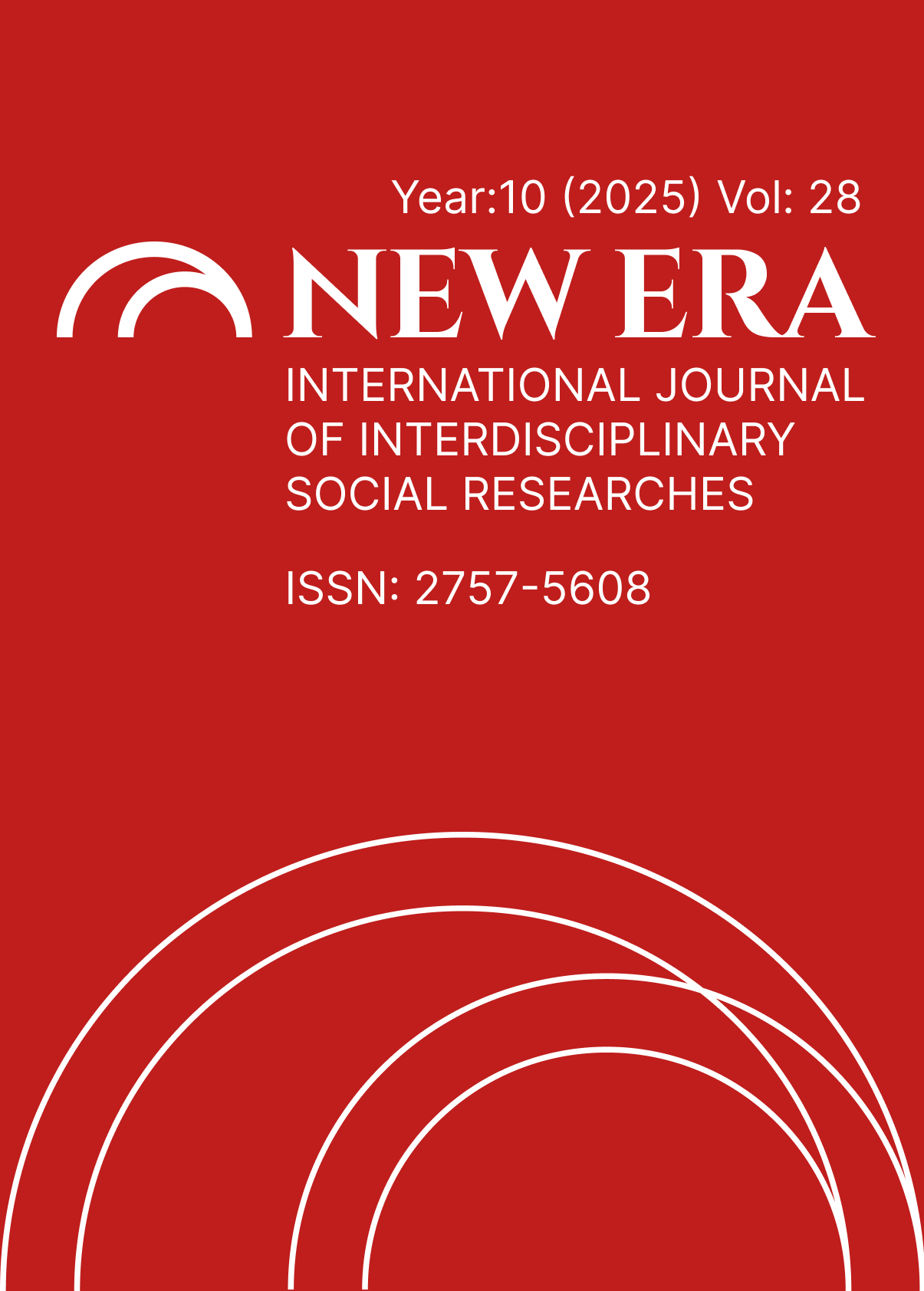THE SUBJECT OF LEGENDS FROM THE ELEMENTS OF INTANGIBLE CULTURAL HERITAGE 8. THE EFFECT OF CLASSROOM VISUAL ARTS COURSE ON STUDENTS' VIEWS ON THE DEVELOPMENT OF CULTURAL HERITAGE AWARENESS
DOI:
https://doi.org/10.5281/zenodo.15315370Keywords:
Somut Olmayan Kültürel Miras, Efsaneler, Görsel Sanatlar DersiAbstract
Every society has tangible and intangible cultural heritage that connects its past and present. These legacies reflect the values and history of the community. Legends, one of the intangible cultural heritage elements, are one of the important elements that keep our cultural heritage alive. The aim of this study is to develop the awareness of intangible cultural heritage in the visual arts course with the example of legends. In this context, in the 8th grade visual arts course, students' knowledge of legends, one of the intangible cultural heritage elements, was examined. Case study design, one of the qualitative research methods, was used in the study. The study group of the research consists of 30 students studying in a secondary school in Sur district of Diyarbakır province. In the study, a twelve-question semi-structured interview form developed by the researchers was used as a data collection tool. The data obtained from the interview form were examined and content analysis was performed by natural coding. In the interview with the students, it was seen that the students gave answers showing that they had gained in-depth knowledge about intangible cultural heritage and legends as a result of the education process in which the subject of legend, one of the elements of intangible cultural heritage, was discussed. Recommendations were made according to the results obtained. It can be said that the visual arts course is important in the development of intangible cultural heritage awareness and contributes to the development of this awareness by making students more sensitive to the cultural heritage elements around them.
References
Alkhatib. A. (2022),Kültürel Mirasta Afet Yönteminin Değerlendirilmesi: Suriye Örneği Yayınlanmamı Yüksek Lisans Tezi, Yıldız Teknik Üniversitesi Fen Bilimleri Enstitüsü İstanbul
Baltacı, A.(2019).Nitel Araştırma Süreci: Nitel Araştırma Nasıl Yapılır? Ahi Evran Üniversitesi Sosyal Bilimler Enstitüsü Dergisi.C.5, S.368-388 https://doi.org/10.31592/aeusbed.598299
Büyüköztürk, Ş. Kılıç-Çakmak, E. Akgün, Ö.E. Karadeniz, Ş. & Demirel, F.(2019), Eğitimde Bilimsel Araştırma Yöntemleri. Anakara: Pegem Akademi.
Cemaloğlu, N.(2020), Bilimsel Araştırma Teknikleri ve Etik. Ankara: Pegem Akademi
Deveci, H.(2009). Sosyal Bilgiler Dersinde Kültürden Yaralanma: Öğretmen Adaylarının Kültür Portfolyolarının İncelenmesi, Elektronik Sosyal Bilgiler Dergisi, 28(8),1-6.
Gürel, D. (2018). Somut Olmayan Kültürel Miras Etkinliklerinin 7.sınıf Sosyal Bilgiler Dersinde Kullanımı, (Yayın No.527658) (Doktora Tezi, Gazi Üniversitesi Eğitim Bilimleri Enstitüsü ). YÖK Ulusal Tez Merkezi
Gürel D.,Çetin T.(2017),An Investigation of Secondary School 7th Grade StudensAwarenessforIntangibleCulturalHeritace, Journal of EducationandPractice, vol.8 no: 27.
Keskin,H. Girgin, G.K.(2021), Unesco Somut Olmayan Kültürel Miras İnsanlığının Temsili Listesi Ve Gruplandırılması Ve Türk Mutfağı Kültürü,Journal of TourismAndGatronomiStudies, C.5.s. 214-231.
Kolaç, E. (2009). Somut Olmayan Kültürel Mirası Koruma, Bilinç ve Duyarlılık Oluşturmada Türkçe Eğitiminin Önemi. Milli Folklor Dergisi 82(21), 19-31.
Merriam,S.B.(2018).Nitel Araştırma: Desen ve Uygulama İçin Bir Rehber, Turan. S. (çev.),Ankara: Nobel Yayınları
Önal,M.N.(2021), Efsanelerin Geçmişi, Bugünü ve Geleceği, MSKÜ Edebiyat Fakültesi Dergisi,C.1.S.1.
Özünel,E.Ö.(2019), Geleneğin Geleceği: Somut Olmayan Kültürel Miras Unsuru Olarak Aşıklık, AHBV, Edebiyat Fakültesi Dergisi,Sayı 1.
Sakaoğlu, S. (2018),Efsane Araştırmaları,Konya, Kömen Yayınevi
Turan, M. M. Y. (2017), Görsel Sanatlar Dersinde 10 Yaş Grubu Çocuk Resimlerinin İncelenmesinde Gösterge Çözümlenmesi, (Yayın No. 485929) Doktora Tezi, Gazi Üniversitesi, Eğitim Bilimleri Enstitüsü) YÖK Ulusal Tez Merkezi
Tunçer, M.(2017), Kültürel Miras ve Koruma, Ankara, Gazi Kitapevi Yayınları.
Ünlü, İ.(2012), İlköğretim 8. Sınıf Öğrencilerinin Kültür Algılarının İncelenmesi, Ahi Evran Üniversitesi Kırşehir Fakültesi Dergisi(KEFAD)Cild 13, sayı 1, 77-92.
Ünlü, M.M. (2022), Sanat Eğitiminde Proje Temelli Öğrenmenin Öğrencilerin İlgilerine, Başarılarına ve Görüşlerine Etkisi, Yayınlanmamış Doktora Tezi, Necmettin Erbakan Üniversitesi, Eğitim Bilimleri Enstitüsü, Konya
Yeşilbursa, C. C. (2011), Sosyal Bilgilerde Miras Eğitiminin Öğrencilerin Somut Kültürel Mirasa Karşı Tutumlarına ve Akademik Başarılarına Etkisi. (Yayın No. 298403) Doktora Tezi Gazi Üniversitesi, Eğitim Bilimleri Enstitüsü). YÖK Ulusal Tez Merkezi
Downloads
Published
How to Cite
Issue
Section
License
Copyright (c) 2025 NEW ERA INTERNATIONAL JOURNAL OF INTERDISCIPLINARY SOCIAL RESEARCHES

This work is licensed under a Creative Commons Attribution-NonCommercial 4.0 International License.


